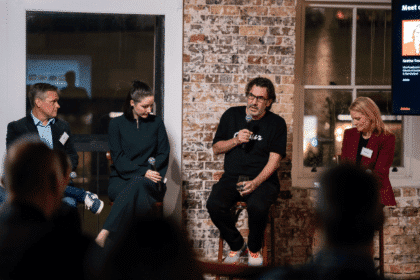Online advertisers face an inherent conflict. Collect too much user data and it is a breach of privacy, but collect too little and targeting becomes less effective.
But now one of the world’s biggest digital advertisers Google is setting out to change this, with its newly-announced ‘Privacy Sandbox’.
“We want to find a solution that both really protects user privacy and also helps content remain freely accessible on the web,” said Google director of Chrome engineering, Justin Schuh.
“We will work with the web community to develop new standards that advance privacy, while continuing to support free access to content.”
As web users continue to demand greater privacy protections, browsers like Firefox have started to block third-party cookies by default.
But Google believes blocking cookies only leads to more malicious techniques like fingerprinting, which takes granular pieces of data, like what device is being used, to match users across different sites.
“Unlike cookies, users cannot clear their fingerprint, and therefore cannot control how their information is collected,” said Schuh.
“We think this subverts user choice and is wrong.”
Sandboxes are already used by web browsers to control malware, however, Google’s new privacy product will apply this same technology to unwanted tracking features.
How it works
The Privacy Sandbox will, in essence, be “a secure environment for personalisation that also protects user privacy”, Schuh said.
While Google is still mapping out exactly how it will work – and is open to industry feedback – Schuh indicated it will involve keeping more information “on-device only” and anonymising some of the data that is collected and shared with advertisers.
Google also hopes it can create a new set of standards when it comes to protecting user’s privacy.
For advertisers, the goal is not to undermine the effectiveness of targeting, rather it is to create a more sustainable ecosystem.
According to Google, removing cookies from advertising can reduce funding for publishers by an average of 52 per cent.
Google hopes the Privacy Sandbox will allow publishers to earn money from targeted ads while protecting user data.
Do more with less
Google’s plans to change the online advertising model is in accordance with Google Australia managing director Mel Silva’s recent comments about the role of data in advertising.
“For us [Google], it means finding the smallest amount of data possible to provide a really useful service for someone,” she said at Advertising Week in Sydney last week.
“For advertising, it is the smallest amount of data that you need to provide an exceptional ad experience.”
Speaking on the Privacy Sandbox announcement, IAB Australia CEO Gai Le Roy welcomed the move.
“It is encouraging to see the Chrome team proactively launch a community-based initiative that supports the industry taking a collaborative approach to responsibly managing consumer privacy, identity and consent – whilst still recognising the critical importance of advertising revenue for the open web,” Le Roy said.
“IAB Australia was particularly pleased to see the invitation for industry consultation early on in this project.
“Everyone having standardised solutions that will enable consumers to see relevant content and advertising across the publishing ecosystem will always be important, and market-wide consultation will be required to effectively achieve this.
“We would also hope that benevolent industry ID consortiums such as IAB Tech Lab’s DigiTrust can also be considered and ultimately integrated into similar potential solutions, so as to ensure that these initiatives benefit the broader market.”








